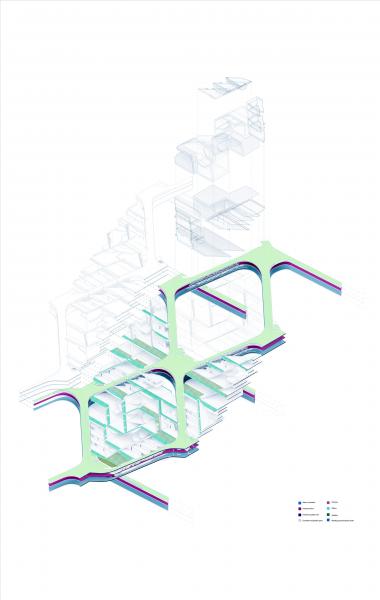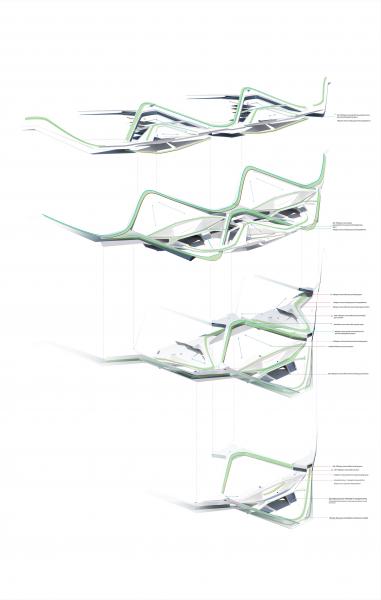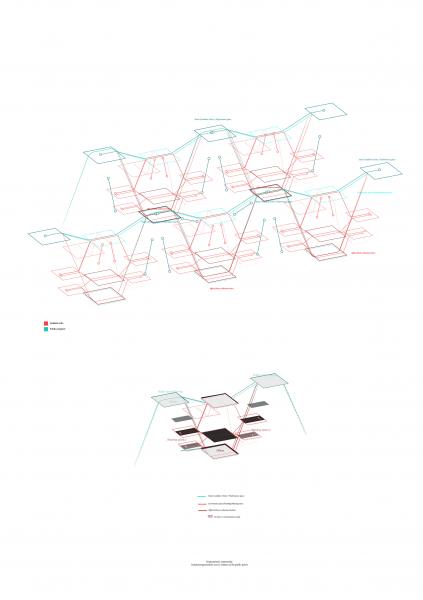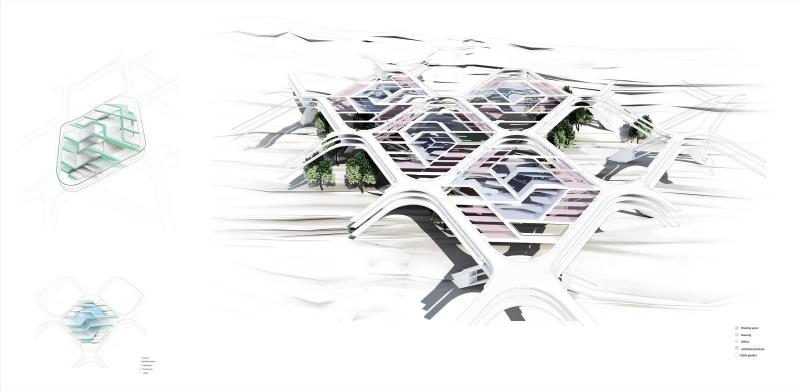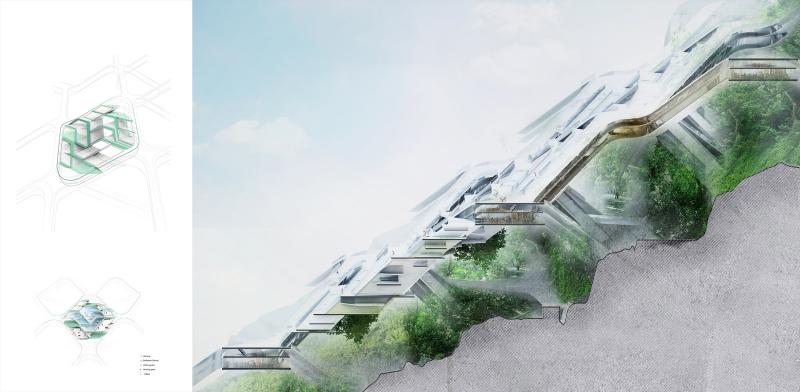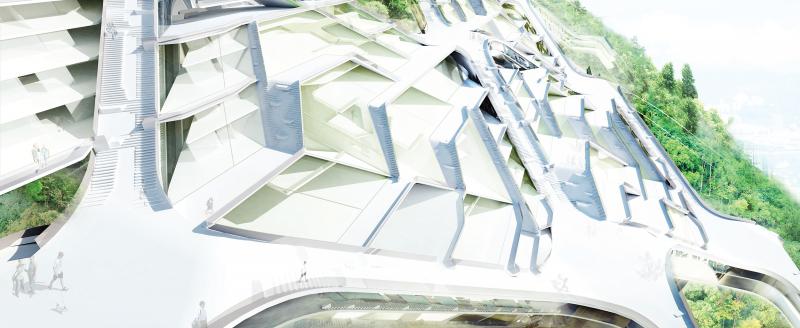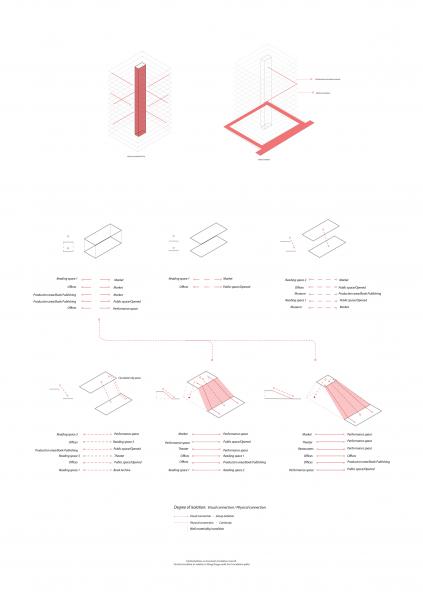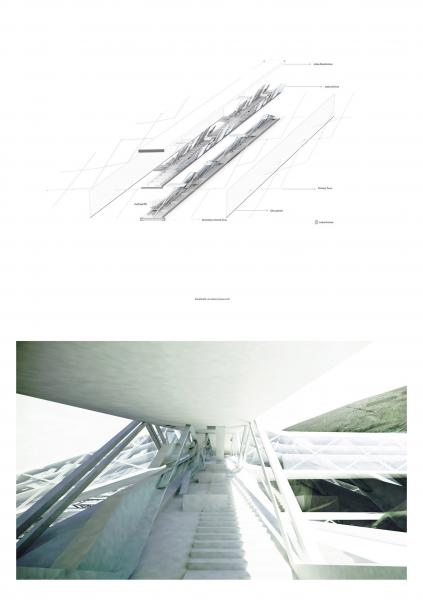Urban Indexing
The project is initiated by questioning what defines varying levels of social interaction within an urban context. It questions the boundaries that define the transition, or sharp distinction between social interaction private isolation.
Through the application of the library as a model for behavior, the project is aiming at questioning the relationship between circulation, structure a cultural index, as well as the role of circulation, which now acts as a space of optimization, extreme consumerism, performs as a left over residue of the property line.
Through the use of an oblique habitable framework, the relationship between circulation structure collapse. Each circulation path is brought to the surface, while it becomes calibrated according to the public nature of the programmatic enclosure, to allow for varying levels of social engagement. Circulation the relationships between programs become externalized, while all the boundary conditions perform as connecting circulation pathways.
The structure acts as civic armature to the definition of a neighborhood, integrating circulation, structure a cultural record, allowing navigability as well as varying levels of interaction within the urban framework.



